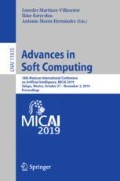Abstract
The pace of daily life causes new perspectives on the idea of new and old, human and technical. Within an era of doubts, hope and fear about technological progress, it’s necessary to understand how human condition has always been related and dependent of technique. It is precisely our relationship to technology that this text focuses on, but also on the many ways IA has influenced, or could transform, our idea of humanity. Through an abductive strategy, several arguments are presented to engage and disengage with both utopias and dystopias.
Access this chapter
Tax calculation will be finalised at checkout
Purchases are for personal use only
References
Griziotti, G.: Neurocapitalisme. Pouvoirs numériques et multitudes. C&F Éditions, Paris (2018)
Feenberg, A.: Between Reason and Experience: Essays in Technology and Modernity. MIT Press, London (2010)
Casilli, A., Cardon, D.: Qu’est-ce que le digital labour? INA Éditions, Paris (2015)
Jameson, F.: Arqueologías del futuro. El deseo llamado utopía y otras aproximaciones de ciencia ficción. Akal, Madrid (2009)
Schmidt, E., Cohen, J.: El futuro digital. Grupo Anaya, Madrid (2014)
Sadin, E.: La humanidad aumentada. La administración digital del mundo. Caja Negra Editores, Buenos Aires (2017)
Mori, M.: The uncanny valley. Energy 7(4), 33–35 (1970)
Benbouzid, B., Cardon, D.: Machines à prédire. Réseaux 211(5), 9–33 (2018)
Flichy, P.: L’innovation technique. La Découverte, Paris (2007)
Jouët, J.: Retour critique sur la sociologie des usages. Réseaux Commun. Technol. Société 18(100), 487–521 (2000)
Perriault, J.: La logique de l’usage: essai sur les machines à communiquer. Editions L’Harmattan, Paris (2008)
Author information
Authors and Affiliations
Corresponding author
Editor information
Editors and Affiliations
Rights and permissions
Copyright information
© 2019 Springer Nature Switzerland AG
About this paper
Cite this paper
Medina-Aguilar, G.A. (2019). The Blade Runner Scene. How Human-Machine Contact Incarnates Social Interaction. In: Martínez-Villaseñor, L., Batyrshin, I., Marín-Hernández, A. (eds) Advances in Soft Computing. MICAI 2019. Lecture Notes in Computer Science(), vol 11835. Springer, Cham. https://doi.org/10.1007/978-3-030-33749-0_39
Download citation
DOI: https://doi.org/10.1007/978-3-030-33749-0_39
Published:
Publisher Name: Springer, Cham
Print ISBN: 978-3-030-33748-3
Online ISBN: 978-3-030-33749-0
eBook Packages: Computer ScienceComputer Science (R0)

